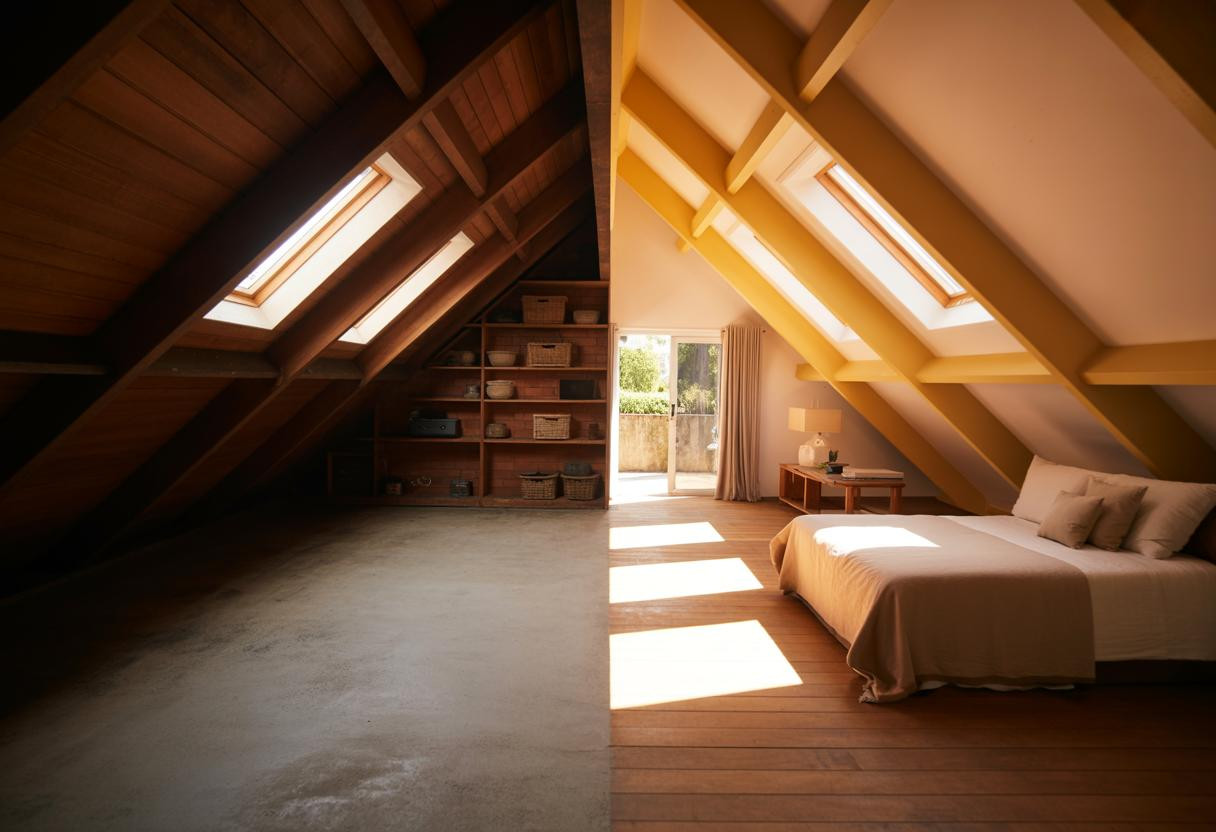Recent data reveals that strategic attic conversions are adding an average of 300-800 square feet of usable living space to homes, with some projects achieving remarkable 56% return on investment while costing significantly less than traditional home additions. What makes these transformations even more compelling is how modern engineering techniques are revolutionizing what was once considered impossible in cramped attic spaces.
The surge in attic conversions reflects a broader shift in how homeowners maximize existing space. With construction costs rising and urban lots becoming scarce, smart homeowners are looking up instead of out. Today’s conversion projects aren’t just about adding storage—they’re creating sophisticated living environments that rival ground-floor rooms in both functionality and appeal.
Revolutionary structural solutions changing everything
Modern attic conversions employ craftsmanship techniques that modern engineers struggle to replicate, particularly in load-bearing modifications. When homeowners need to support heavy equipment like industrial sewing machines, contractors now combine 6×2 timber reinforcement with strategic steel beam placement to distribute weight safely across existing floor structures.
The modular revolution in construction speed
Prefabricated timber frame systems are completing projects in 8-12 weeks versus traditional 16-20 week timelines. Companies like Moduloft have pioneered approaches that minimize on-site disruption while maximizing structural integrity. These systems prove particularly effective for hip-to-gable conversions, which consistently finish 3-4 weeks faster than dormer installations.
Smart window integration transforms livability
Strategic roof window placement is revolutionizing attic environments. One documented case installed 12 VELUX roof windows plus two sun tunnels, creating bright, naturally ventilated spaces that rival any ground-floor room. Remote-controlled systems with rain sensors now maintain optimal temperature and airflow automatically.
Financial performance data reveals surprising patterns
Cost analysis shows attic conversions ranging from $30-60 per square foot, significantly less than new construction at $100-200 per square foot. However, the most successful projects focus on cost-effective techniques that deliver professional results through strategic material choices and efficient labor scheduling.
Duration directly correlates with cost efficiency. L-shaped conversions in Birmingham completed in 10 weeks, while more complex dormer projects required 12 weeks. The fastest documented completion involved modular construction that transformed an attic into functional family space in just weeks.
Design strategies maximizing every square inch
The most successful conversions challenge conventional wisdom about attic limitations. Design choices that maximize visual impact and functionality include creating multi-level spaces that work with sloped rooflines rather than against them.
Open-plan concepts defy expectations
London penthouse garden rooms demonstrate how open-plan kitchen integration transforms cramped attics into sophisticated living environments. These projects prove that thoughtful layout design matters more than raw square footage in creating valuable living space.
Sustainability features driving modern conversions
Energy efficiency improvements are becoming standard, not optional. Practical solutions that professionals recommend for better living conditions include passive thermal regulation through strategic window placement and automated ventilation systems that reduce energy consumption by 15-25%.
Timber frame construction minimizes waste while reducing embodied carbon compared to traditional methods. Smart home integration with automated climate control systems ensures converted spaces maintain comfortable conditions year-round without excessive energy use.
What these transformations really mean for homeowners
The most striking revelation is how these projects deliver immediate lifestyle improvements alongside long-term financial gains. Families report that converted attics become their most-used spaces, often serving multiple functions throughout the day. The combination of natural light, proper insulation, and thoughtful design creates environments that feel completely separate from traditional cramped attic stereotypes.
